-
 Bitcoin
Bitcoin $118400
0.47% -
 Ethereum
Ethereum $3836
2.20% -
 XRP
XRP $3.157
2.98% -
 Tether USDt
Tether USDt $0.9999
-0.03% -
 BNB
BNB $801.5
1.31% -
 Solana
Solana $180.9
2.07% -
 USDC
USDC $0.9999
-0.02% -
 Dogecoin
Dogecoin $0.2225
2.50% -
 TRON
TRON $0.3285
-1.02% -
 Cardano
Cardano $0.7789
2.60% -
 Hyperliquid
Hyperliquid $43.60
2.39% -
 Sui
Sui $3.892
4.41% -
 Stellar
Stellar $0.4229
3.34% -
 Chainlink
Chainlink $18.01
3.98% -
 Hedera
Hedera $0.2745
6.77% -
 Bitcoin Cash
Bitcoin Cash $582.3
3.38% -
 Avalanche
Avalanche $23.77
1.04% -
 Ethena USDe
Ethena USDe $1.001
0.01% -
 Toncoin
Toncoin $3.493
3.59% -
 Litecoin
Litecoin $110.0
2.48% -
 UNUS SED LEO
UNUS SED LEO $8.936
-0.37% -
 Shiba Inu
Shiba Inu $0.00001304
2.49% -
 Uniswap
Uniswap $9.999
1.09% -
 Polkadot
Polkadot $3.897
3.26% -
 Monero
Monero $308.6
-0.83% -
 Dai
Dai $0.9999
-0.01% -
 Bitget Token
Bitget Token $4.504
-0.04% -
 Pepe
Pepe $0.00001154
2.95% -
 Cronos
Cronos $0.1471
3.06% -
 Ethena
Ethena $0.6691
19.53%
How to add positions when the monthly CCI bottom divergence is confirmed + weekly line breaks through the downward trend line + daily line steps back on the gap?
A confirmed monthly CCI bottom divergence, weekly trend line breakout, and daily retest of a gap create a high-probability long entry with proper risk management.
Jul 30, 2025 at 06:29 am
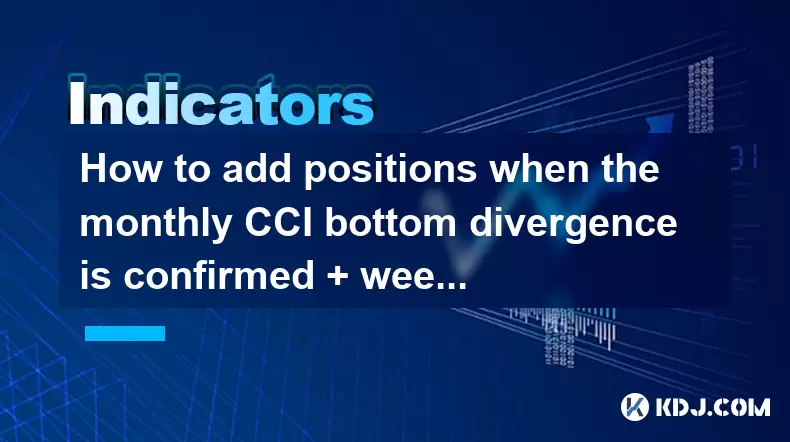
Understanding the CCI Indicator and Monthly Bottom Divergence
The Commodity Channel Index (CCI) is a momentum-based oscillator used to identify overbought and oversold conditions in the market. When analyzing monthly CCI bottom divergence, traders look for a scenario where the price makes a lower low, but the CCI forms a higher low. This indicates weakening downward momentum and a potential reversal. Confirming this divergence requires careful alignment of price action and CCI readings across the monthly chart. To spot this pattern, open your trading platform and navigate to the monthly timeframe. Apply the CCI indicator with a standard period of 14. Look for at least two troughs in price where the second trough is lower than the first, while the corresponding CCI values show the second trough higher than the first. This confirmed monthly CCI bottom divergence suggests that bearish pressure is diminishing, setting the stage for a potential long entry.
Identifying the Weekly Break of a Downward Trend Line
After confirming the monthly divergence, the next signal comes from the weekly chart breaking through a downward trend line. Begin by drawing a trend line connecting at least two significant swing highs on the weekly chart. Ensure the line extends downward and has been tested at least once or twice for validity. Monitor the price action closely. A valid breakout occurs when the closing price of a weekly candle moves above the trend line and remains sustained for at least one full week. Use a candlestick close, not an intraday spike, to confirm the breakout. To avoid false signals, check volume or on-balance volume (OBV) indicators on the weekly chart. A rising OBV during the breakout supports the legitimacy of the move. Once confirmed, this weekly breakout indicates a shift in market structure from bearish to potentially bullish, reinforcing the signal from the monthly CCI divergence.
Analyzing Daily Price Action and Gap Fill Behavior
The third condition involves the daily chart stepping back on the gap. After a strong upward move, especially post-breakout, prices often leave behind unfilled gaps. These gaps act as psychological or technical support zones. To apply this rule, identify a measurable gap on the daily chart — a space between two candlesticks with no trading activity in between. Common types include breakaway or runaway gaps. After the weekly breakout and monthly divergence confirmation, wait for the price to retrace back toward this gap area. The key is that the price should approach the gap but not necessarily fill it completely. Look for bullish candlestick patterns such as hammer, bullish engulfing, or morning star near the gap zone. Additionally, volume should decrease during the pullback, indicating lack of selling pressure. This step back on the gap acts as a retest of support, offering a low-risk entry point aligned with higher time frame signals.
Executing the Entry and Position Sizing Strategy
With all three conditions met — monthly CCI bottom divergence, weekly trend line breakout, and daily retest of the gap — it's time to enter the trade. Open your trading interface and set a limit order slightly above the daily candle’s close that shows confirmation (e.g., a bullish engulfing). Avoid market orders to prevent slippage. For position sizing, allocate no more than 2% of your total portfolio to this single trade. Calculate your position size using the formula:
- Risk per trade = Account size × 0.02
- Stop loss distance = Entry price – recent swing low on daily chart
- Position size = Risk per trade / Stop loss distance
Place your stop loss just below the gap zone or the most recent daily swing low, whichever is lower. This protects against a false breakout. Use a trailing stop or partial profit-taking strategy as the price moves in your favor. Consider dividing your position into two parts: one to secure early gains, the other to ride the trend.
Monitoring Confirmation Signals and Managing Risk
Even after entry, continuous monitoring is essential. Check if the daily RSI remains above 50, indicating bullish momentum. Watch for the weekly MACD to stay above its signal line. If volume surges on up days and contracts on down days, it confirms accumulation. Avoid adding to the position unless a new setup forms on a higher timeframe. If the price fails to hold above the gap and closes below it for two consecutive days, exit the trade. Use a risk-reward ratio of at least 1:3 — ensure your target is three times the distance of your stop loss. Adjust your trailing stop weekly based on the new swing lows. Never move the stop loss upward beyond the current price; always keep it below support.
Common Mistakes and How to Avoid Them
Traders often misidentify false divergences by not waiting for candle closure on the monthly chart. Always wait for the month to end before confirming CCI divergence. Another error is drawing trend lines too tightly on the weekly chart — use only clear, tested swing highs. Some act on gap fills too early; remember, the price only needs to step back toward the gap, not fill it entirely. Impatience leads to premature entries. Also, ignoring volume during the weekly breakout increases risk. Always cross-verify with OBV or volume indicators. Lastly, over-leveraging after a triple confirmation can wipe out gains during pullbacks. Stick to strict position sizing rules.
Frequently Asked Questions
Q: How do I confirm that the CCI divergence on the monthly chart is valid?
A: A valid monthly CCI bottom divergence requires the price to make a lower low while the CCI makes a higher low. Both lows must be from completed monthly candles. The second CCI trough must not break below the first. Use horizontal lines on the CCI to visually compare levels. Confirmation occurs when the price begins to rise in the following month with increasing volume.
Q: What if the weekly candle only wicks above the trend line but closes below it?
A: A wick above the trend line without a confirmed close above is not a valid breakout. Wait for a full weekly candle to close above the trend line. False wicks are common during consolidation and can trap traders. Patience is critical — enter only after a confirmed close.
Q: Can this strategy be applied to altcoins, or is it only for Bitcoin?
A: This strategy works on any cryptocurrency with sufficient historical data and liquidity. Bitcoin and major altcoins like Ethereum, Binance Coin, or Solana are ideal due to reliable chart patterns. Low-cap altcoins often lack consistent volume and may produce false signals.
Q: How long should I wait for the daily price to retest the gap after the weekly breakout?
A: The retest typically occurs within 1 to 4 weeks after the breakout. If no pullback happens within five weeks, the gap may no longer be relevant. In strong momentum markets, gaps remain unfilled, so do not force the trade if the retest doesn’t materialize.
Disclaimer:info@kdj.com
The information provided is not trading advice. kdj.com does not assume any responsibility for any investments made based on the information provided in this article. Cryptocurrencies are highly volatile and it is highly recommended that you invest with caution after thorough research!
If you believe that the content used on this website infringes your copyright, please contact us immediately (info@kdj.com) and we will delete it promptly.
- Ozak AI: Can This Underdog Crypto Achieve a Bull Run to $1?
- 2025-07-31 22:30:12
- Coinbase Breach: Navigating Insider Risk and Bolstering Security
- 2025-07-31 23:11:55
- Bitcoin Rebounds, WeWake Presale Gains Traction: What's the Buzz?
- 2025-07-31 22:30:12
- Bitcoin, Altcoins, and Volume Watchlists: Decoding the Crypto Landscape
- 2025-07-31 23:11:55
- Tron, Fartcoin, and BlockchainFX: What's Trending (and What's Not) in the Crypto World
- 2025-07-31 21:32:19
- Bitcoin, Corporate Investments, and Sustainability: A New Era or Fleeting Fad?
- 2025-07-31 20:50:14
Related knowledge

How can you use the MACD histogram to determine trend strength?
Jul 31,2025 at 11:10pm
Understanding the MACD Histogram and Its ComponentsThe MACD (Moving Average Convergence Divergence) histogram is a visual representation of the differ...
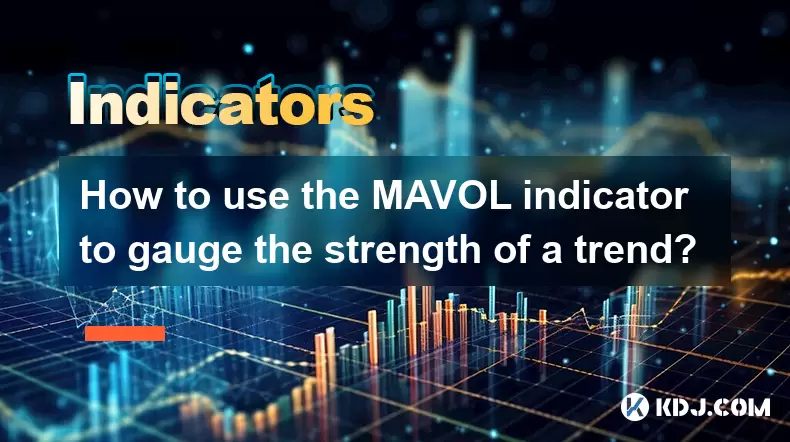
How to use the MAVOL indicator to gauge the strength of a trend?
Jul 31,2025 at 09:57pm
Understanding the MAVOL Indicator in Cryptocurrency TradingThe MAVOL indicator, short for Moving Average of Volume, is a technical analysis tool widel...
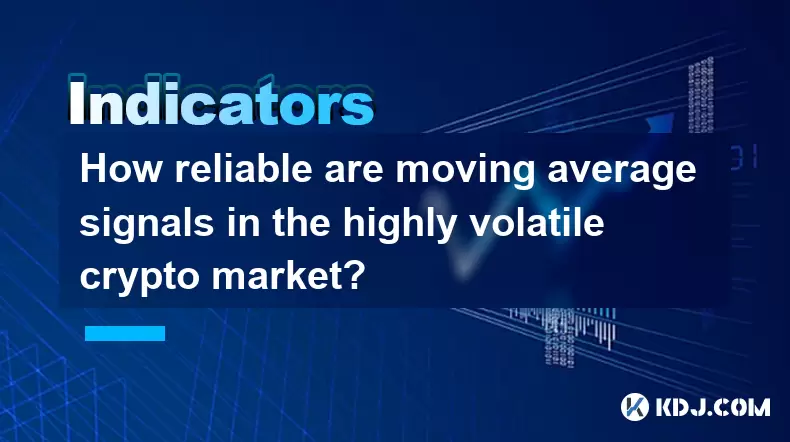
How reliable are moving average signals in the highly volatile crypto market?
Jul 31,2025 at 08:36pm
Understanding Moving Averages in Cryptocurrency TradingMoving averages (MAs) are among the most widely used technical indicators in the cryptocurrency...

How to choose the right moving average for a specific cryptocurrency?
Jul 31,2025 at 10:29pm
Understanding the Role of Moving Averages in Cryptocurrency TradingMoving averages are foundational tools in technical analysis, widely used by crypto...
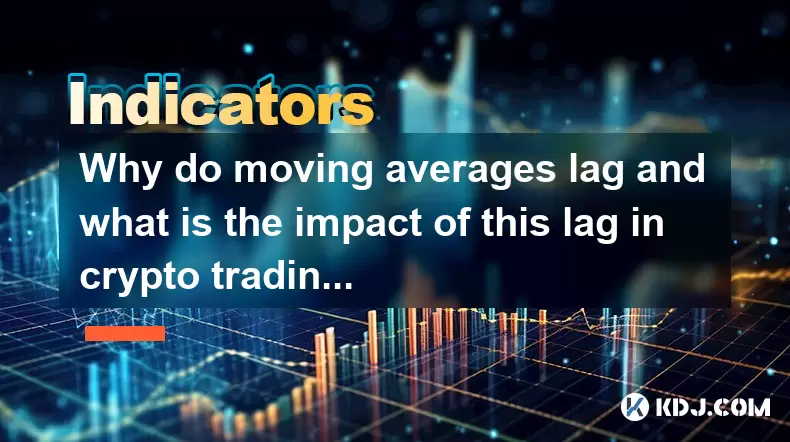
Why do moving averages lag and what is the impact of this lag in crypto trading?
Jul 31,2025 at 08:07pm
Understanding the Concept of Moving Averages in Crypto TradingMoving averages are among the most widely used technical indicators in cryptocurrency tr...
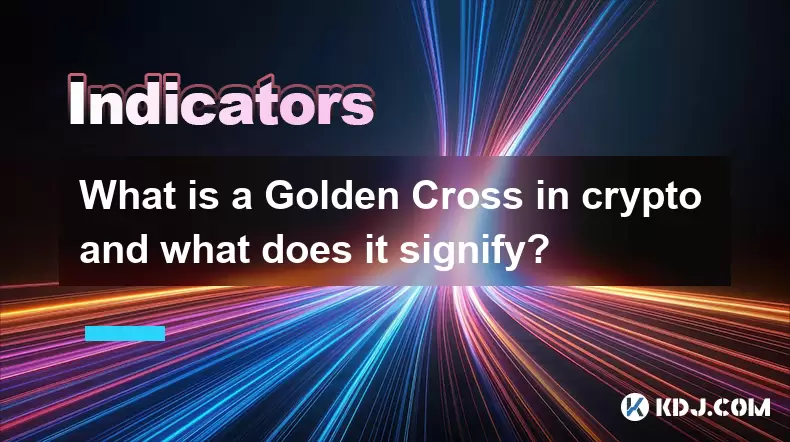
What is a Golden Cross in crypto and what does it signify?
Jul 31,2025 at 10:36pm
Understanding the Golden Cross in Cryptocurrency MarketsThe Golden Cross is a technical analysis pattern widely observed in cryptocurrency trading. It...

How can you use the MACD histogram to determine trend strength?
Jul 31,2025 at 11:10pm
Understanding the MACD Histogram and Its ComponentsThe MACD (Moving Average Convergence Divergence) histogram is a visual representation of the differ...

How to use the MAVOL indicator to gauge the strength of a trend?
Jul 31,2025 at 09:57pm
Understanding the MAVOL Indicator in Cryptocurrency TradingThe MAVOL indicator, short for Moving Average of Volume, is a technical analysis tool widel...

How reliable are moving average signals in the highly volatile crypto market?
Jul 31,2025 at 08:36pm
Understanding Moving Averages in Cryptocurrency TradingMoving averages (MAs) are among the most widely used technical indicators in the cryptocurrency...

How to choose the right moving average for a specific cryptocurrency?
Jul 31,2025 at 10:29pm
Understanding the Role of Moving Averages in Cryptocurrency TradingMoving averages are foundational tools in technical analysis, widely used by crypto...

Why do moving averages lag and what is the impact of this lag in crypto trading?
Jul 31,2025 at 08:07pm
Understanding the Concept of Moving Averages in Crypto TradingMoving averages are among the most widely used technical indicators in cryptocurrency tr...

What is a Golden Cross in crypto and what does it signify?
Jul 31,2025 at 10:36pm
Understanding the Golden Cross in Cryptocurrency MarketsThe Golden Cross is a technical analysis pattern widely observed in cryptocurrency trading. It...
See all articles

























































































